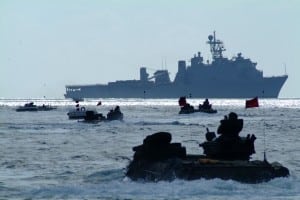
The Marine Corps' newest amphibious assault ships are designed to support expeditionary operations for at least the next 40 years, during which the technology inside their hulls will rapidly become obsolete.Maj. Gen. Christopher Owens, the Marine Corps director of expeditionary warfare, said new warships must have open-architecture components and systems that can be repeatedly and rapidly upgraded to keep pace with threat technologies.“When you think about it, a ship that is going to last 40 years has been designed well…

 By
By 











